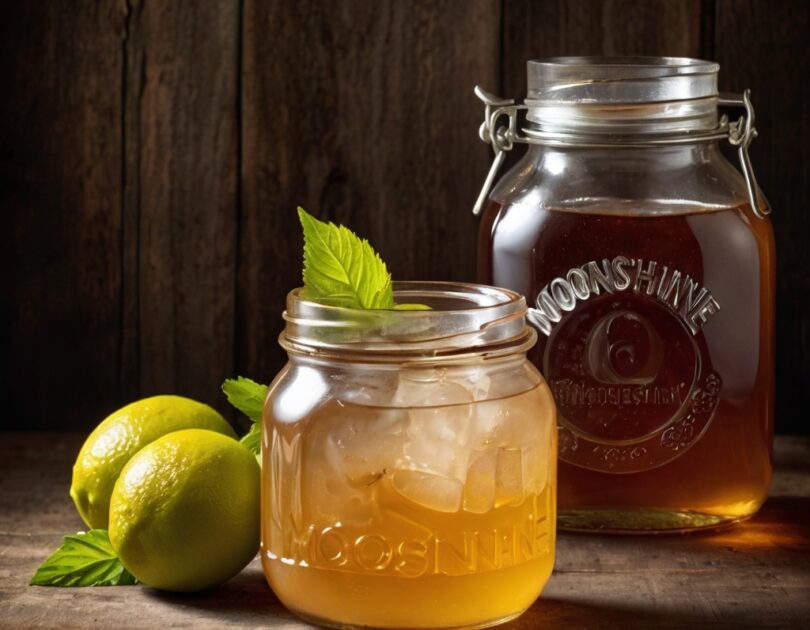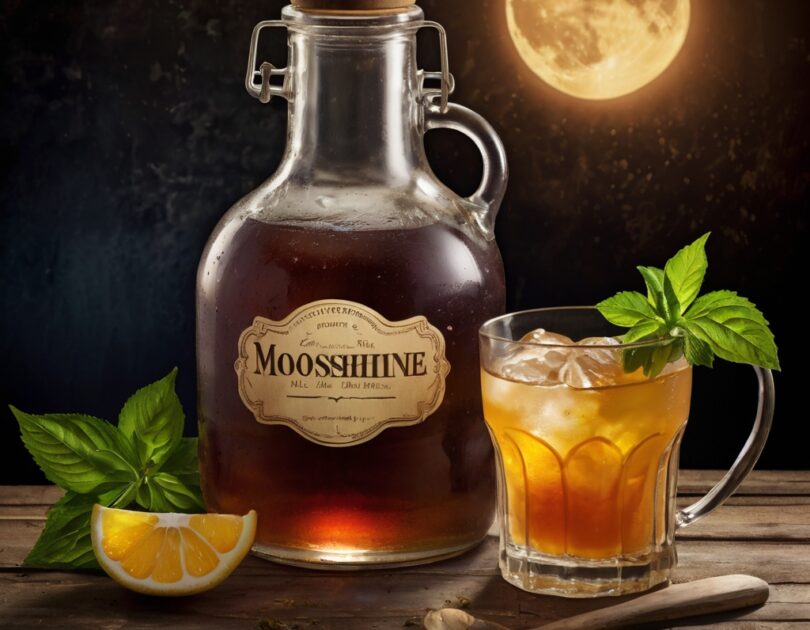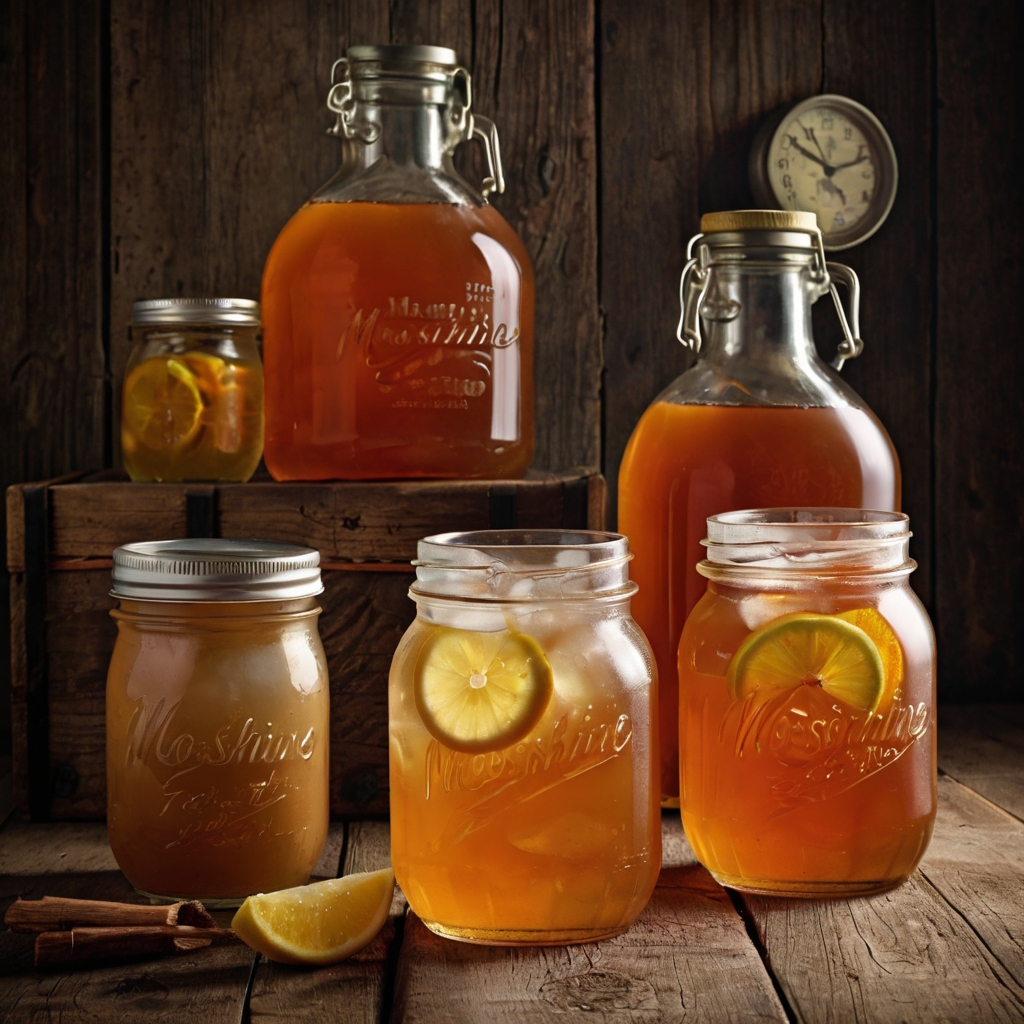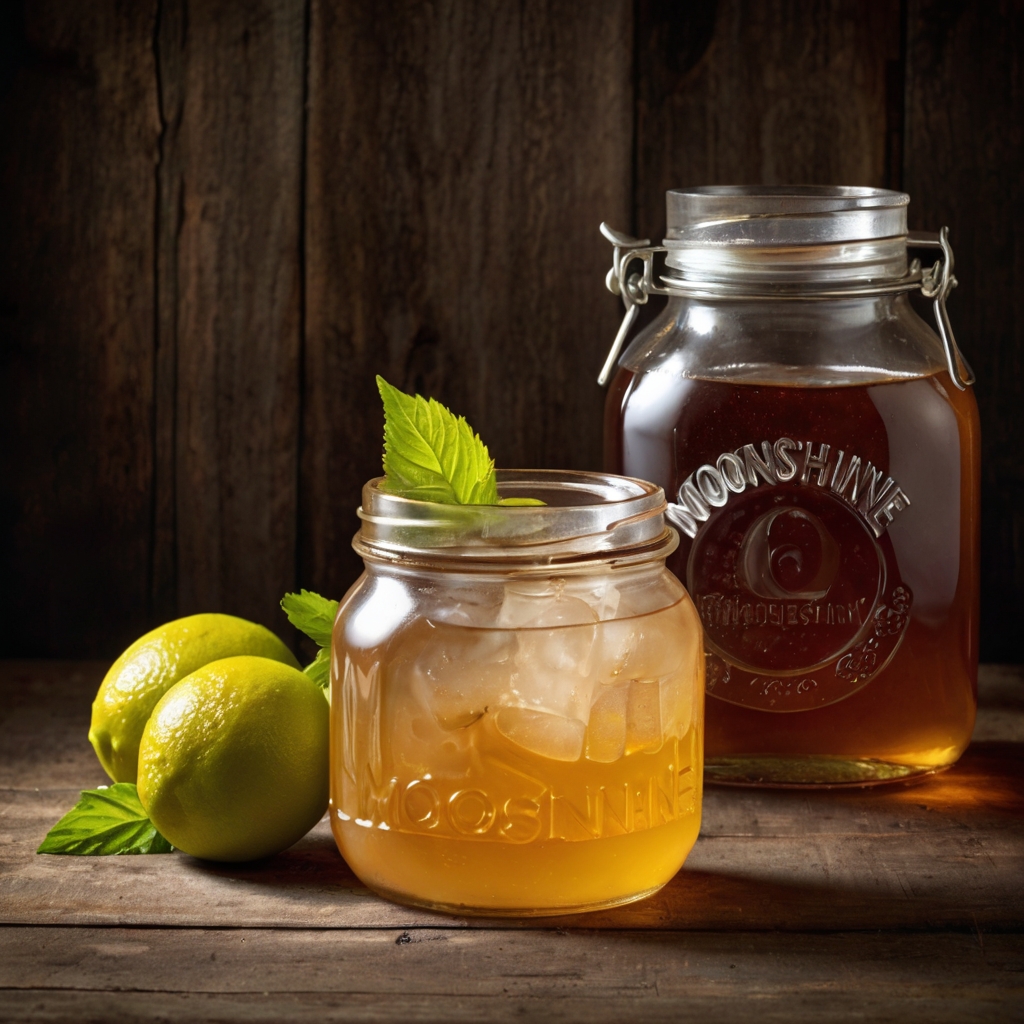Overview
The fabled homemade spirit known as moonshine has a long history that is based on both innovation and tradition. The technique of creating moonshine at home is an intriguing one that blends fermentation science and art distillation. This Moonshine Recipes book has all the knowledge you need to make your own homemade spirits, regardless of your level of experience as a homebrewer. Everything will be covered, including the tools and ingredients as well as thorough directions and suggestions for modifications.
Motives for Delighting in This Recipe





INGREDIENTS
| Simple Moonshine Recipe | |
| 8.5 pounds of broken corn | |
| 1 pound of malted barley | |
| Five quarts of water | |
| 1 packet (1 tablespoon) of yeast for distillation | |
| Recipe for Sweet Feed Moonshine | |
| Eight pounds of sweet feed, or horse grain mix | |
| Two pounds of sugar | |
| Five quarts of water | |
| One package of distillers yeast | |
| Recipe for Apple Pie Moonshine | |
| One gallon of apple juice | |
| One gallon of apple cider | |
| Two cups of white sugar | |
| Two cups of brown sugar | |
| Eight sticks of cinnamon | |
| One-liter moonshine |
Nutrision Information
Note: Depending on the recipe and portion size, this information is approximate and changes.
| 200 calories |
| 20g of carbohydrates |
| 18g of sugars |
| 1g of protein |
| Fat: 0 grams |
| Ten milligrams of sodium |
Required Kitchen Equipment
| Big Pot: To bring the mash to a boil. | |
| Using a fermentation bucket, the mash is fermented. | |
| The still, condenser, and collection vessel comprise the distillation apparatus. | |
| Alcohol concentration can be measured with a hydrometer. | |
| A thermometer is used to measure temperatures. | |
| Using a mixing spoon, whisk the mash. | |
| To separate the solids from the liquid, use a strainer or cheesecloth. |
Visit our Store 🛒
INSTRUCTIONS
| Simple Moonshine Recipe | |
| 1. | Get the mash ready: In a big pot, bring five gallons of water to a boil. To prevent clumping, add 8.5 pounds of cracked corn and mix continually. After keeping it at 165°F for an hour, allow it to drop to 150°F. |
| 2. | Add 1.5 pounds of malted barley when the mixture has cooled. To convert the starches into fermentable sugars, keep the temperature at 150°F and stir thoroughly for an additional hour. |
| 3. | Mash should be moved to a fermentation bucket for fermentation. Once it cools to between 70 and 80°F, add the distillers yeast. After adding an airlock to the bucket, leave it to ferment for five to seven days, or until the bubbling ceases. |
| 4. | Distillation: To get rid of the solids, strain the fermented mash. After adding the liquid, gradually heat it in the still. Gather the distillate and throw away the first 100 milliliters (the “foreshots”) since they contain methanol. |
| 5. | Gather Moonshine: After the alcohol content decreases, collect the “heart” of the distillate, which is the best component. Continue the distillation process. In order to prevent off-flavors, stop gathering before the “tails” (the final portion). |
| Recipe for Sweet Feed Moonshine | |
| 1. | Get the mash ready: In a big kettle with five gallons of water, combine eight pounds of sweet feed and two pounds of sugar. Preheat to 165°F, hold it there for an hour, and then let it to cool. |
| 2. | Fermentation: For fermentation and distillation, use the same procedures as in the basic moonshine recipe. |
| Recipe for Apple Pie Moonshine | |
| 1. | Ingredients: Combine 1 gallon of apple juice, 1 gallon of apple cider, 2 cups each of white and brown sugar, and 8 cinnamon sticks in a big pot. After bringing to a boil, allow to cool. |
| 2. | Blend with Moonshine: After the blend cools, pour in one liter of moonshine. Shake well and pour into a bottle. To give the flavors time to mingle, let it sit for at least a week. |
Video Guide
Benefits of the Food





Tips and Variations





How to Keep Leftovers



FAQ

Legality of home distillation differs by nation and area. Spirits cannot be distilled at home in the US without a federal permit. Check local laws before beginning at all times.

Absolutely, you may experiment with other grains to get distinct flavor profiles, such as rye, wheat, or oats.

The foreshots have poisonous methanol in them. Drinking your moonshine is guaranteed if the first 100 milliliters are thrown out.

When the airlock stops bubbling and the specific gravity doesn’t change for two days in a row, the fermentation is said to have finished.

Yes, after distillation, you can add tastes to your moonshine, such as fruits, spices, or herbs. Allow it to steep in the flavors for a few days.
Conclusion
Producing moonshine at home is a fun and instructive endeavor that lets you make distinctive and tasty alcoholic beverages. You’ll have all you need to get started with this thorough reference to Moonshine Recipes, including step-by-step directions and suggestions for variants. When home distilling, never forget to put safety and legality first.
Call to Action
Take a look at our Moonshine Recipes and share your thoughts with us! Please add your own tweaks and advice in the comments section below. Remember to follow our blog for more creative home brewing ideas and recipes. To your homemade spirits, cheers!




/rating_off.png)




Leave a Reply